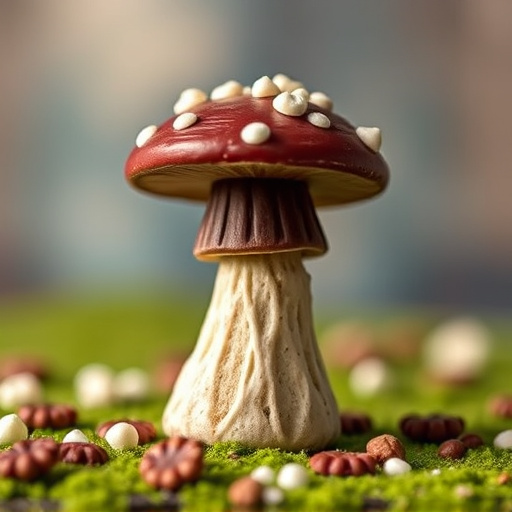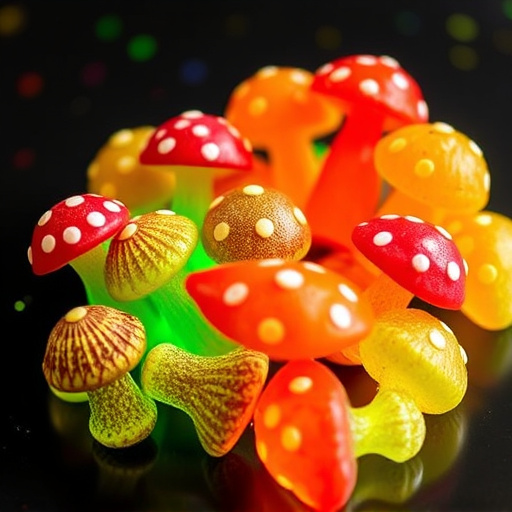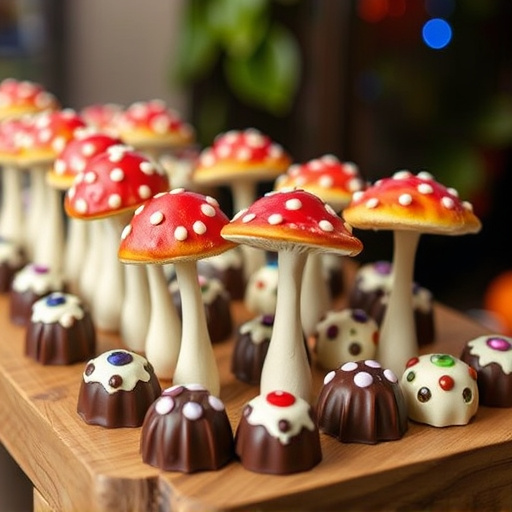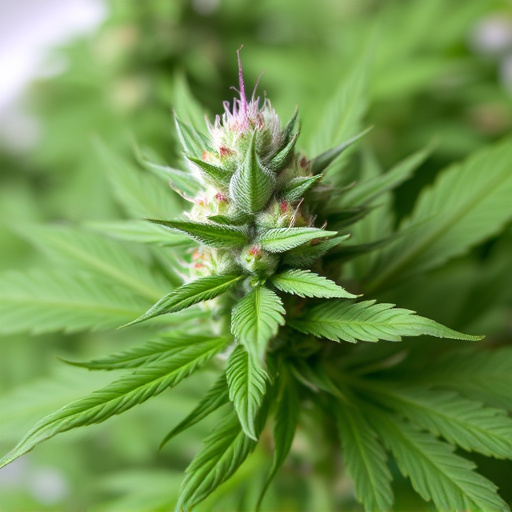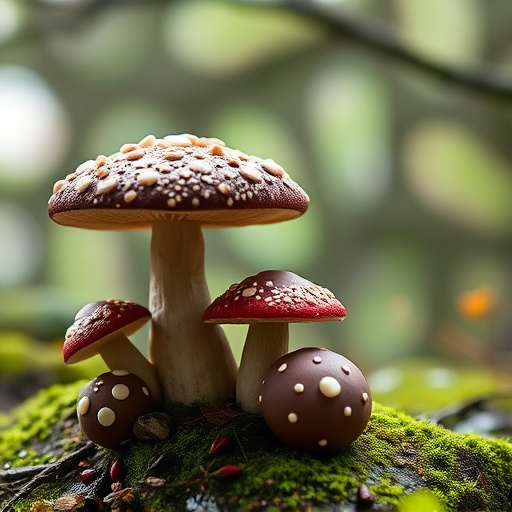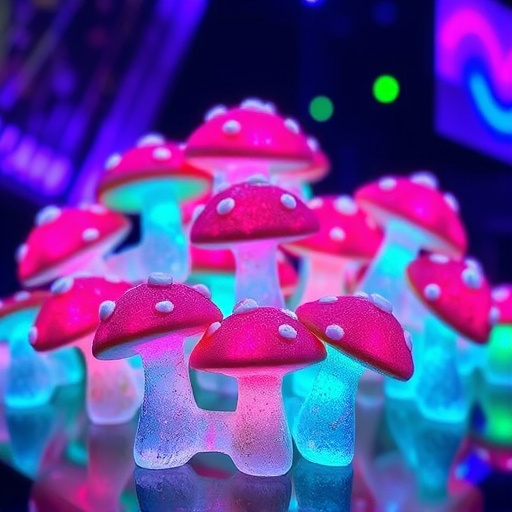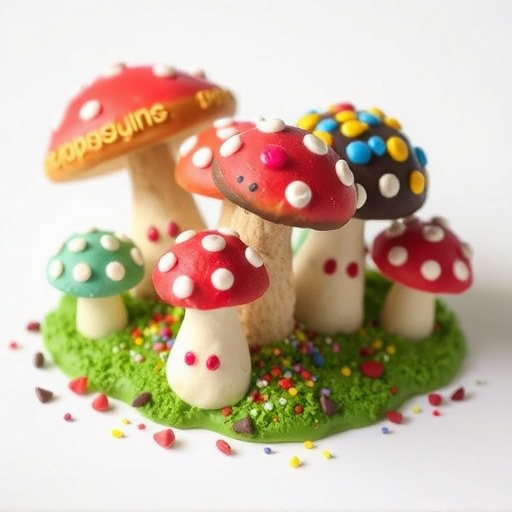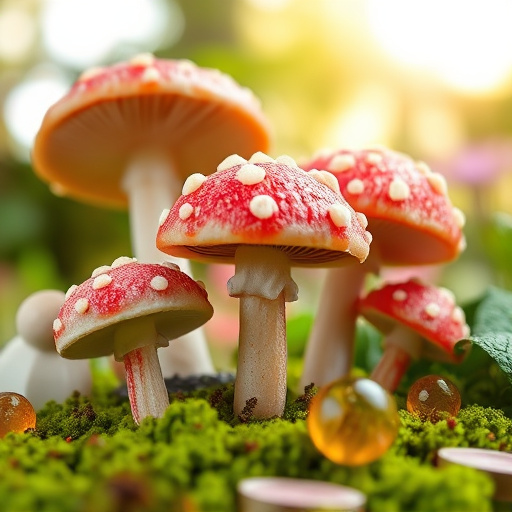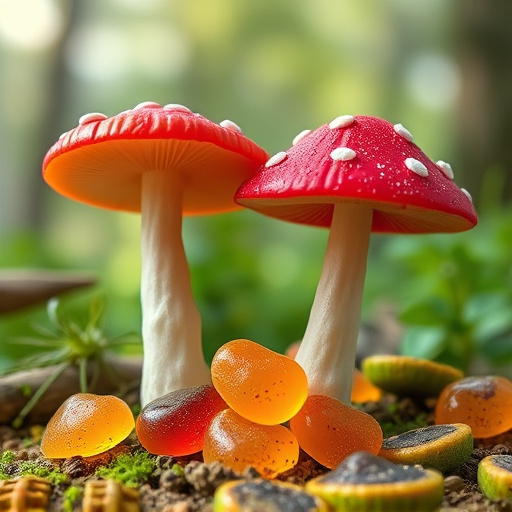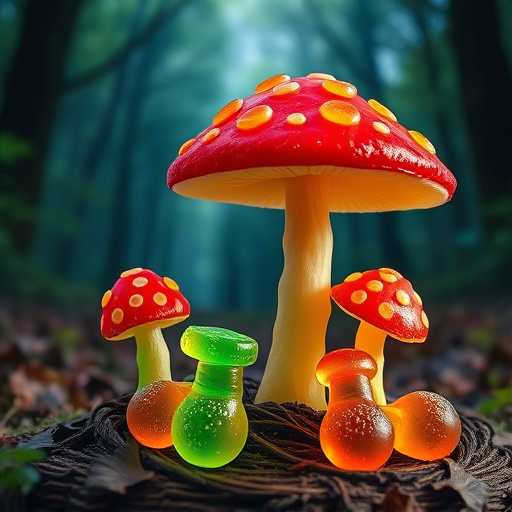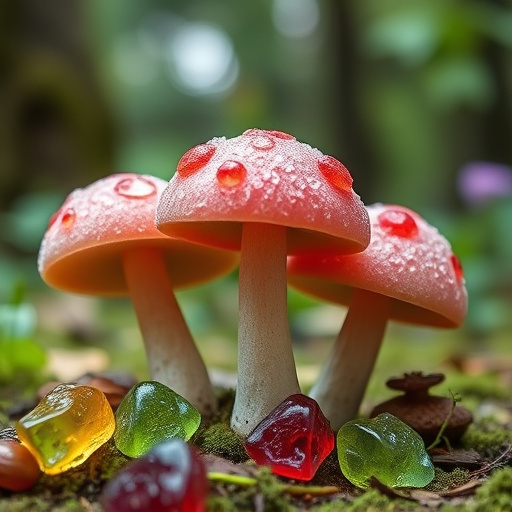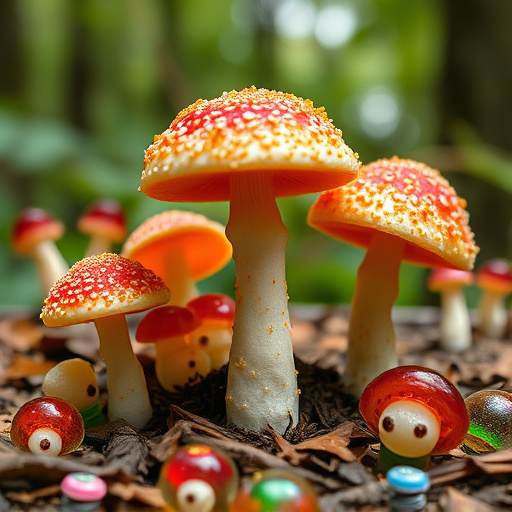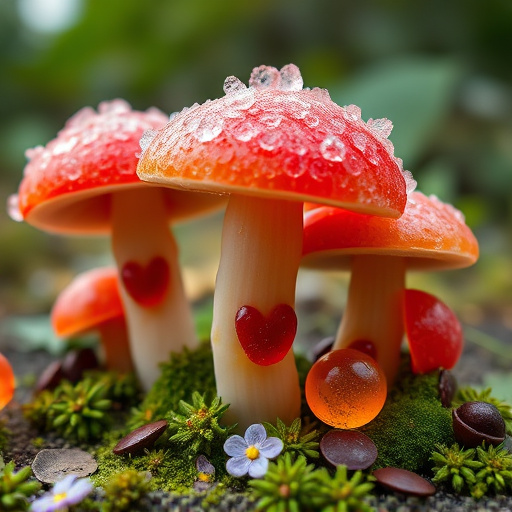"The Science Behind Magic Mushroom Gummies explores the neurochemical powerhouses, psilocybin and psilocin, found in magic mushrooms. These compounds interact with serotonin receptors, offering therapeutic potential for depression and anxiety. Magic mushroom gummies provide a safe, edible way to experience these benefits, combining chemistry and administration for both recreational and therapeutic use."
“Unleash the captivating world of The Science Behind Magic Mushroom Gummies! This comprehensive guide delves into the exclusive promotions surrounding these innovative products. From the psychochemical composition of magic mushrooms, where compounds like psilocybin and psilocin dance with our brains, to their transformation into delectable gummies—a delivery method revolutionizing consumer experiences. We explore the art of gummify and uncover strategic promotional ideas, including limited-edition flavors and collaborative campaigns, for these unique offerings.”
- The Psychochemical Composition of Magic Mushrooms
- – Explore the active compounds in magic mushrooms (e.g., psilocybin and psilocin)
- – Discuss their chemical structure and effects on the human brain
The Psychochemical Composition of Magic Mushrooms
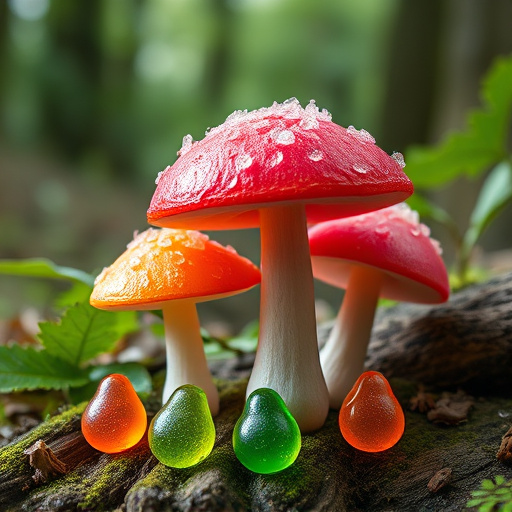
Magic mushrooms, scientifically known as psilocybin mushrooms, contain unique compounds that have fascinated scientists and enthusiasts alike. The psychochemical composition of these fungi is what makes them so intriguing; they produce psilocybin, a compound that has been studied for its potential therapeutic benefits. When consumed, psilocybin converts into psilocin in the body, which interacts with serotonin receptors, leading to altered perceptions and consciousness.
This natural chemical process is at the heart of the growing interest in magic mushroom gummies. By incorporating these mushrooms into edible forms like gummies, manufacturers aim to deliver a controlled dose of psilocybin for those seeking its potential psychological effects. The science behind magic mushroom gummies involves understanding not only the chemistry of the compounds but also their safe and effective administration, making it a fascinating area of exploration in both recreational and therapeutic contexts.
– Explore the active compounds in magic mushrooms (e.g., psilocybin and psilocin)
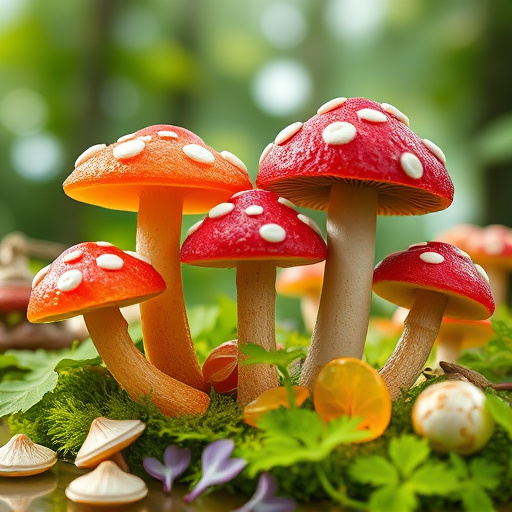
Magic mushrooms, scientifically known for their psilocybin and psilocin compounds, have gained attention for their unique psychological effects. These active ingredients are responsible for the ‘magic’ experiences often associated with mushroom consumption, inducing altered perceptions and heightened sensory awareness. Psilocybin, a naturally occurring psychedelic compound, is converted into psilocin within the body, which interacts with serotonin receptors in the brain, leading to a range of neurochemical changes.
The Science Behind Magic Mushroom Gummies involves understanding these compounds’ interactions with the endocannabinoid system and neurotransmitters. Research suggests that controlled dosages can facilitate therapeutic potential, offering benefits for mental health conditions like depression and anxiety. As such, the incorporation of magic mushrooms into gummy form provides an appealing and discreet way to explore these substances’ effects while tapping into the growing interest in psychedelic-assisted therapy.
– Discuss their chemical structure and effects on the human brain
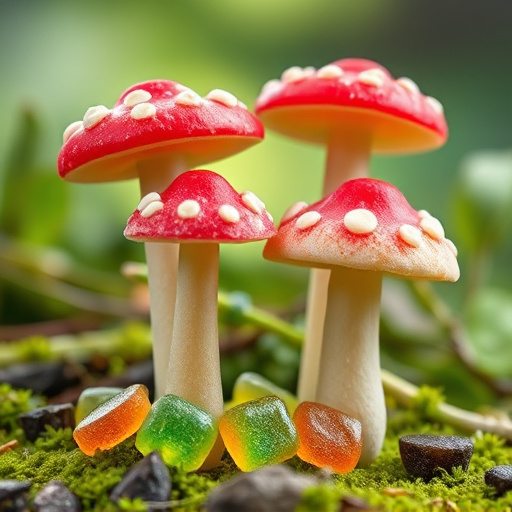
Magic mushroom gummies, an innovative delivery method, offer a unique twist on traditional psilocybin experiences. These edibles contain psychotropic compounds found in certain species of mushrooms, primarily psilocybin and psilocin. When consumed, these chemicals interact with serotonin receptors in the brain, leading to altered perceptions and heightened sensory awareness. The science behind their effects is fascinating; they target specific neural pathways, affecting mood, cognition, and even creativity. Users often report profound emotional experiences, enhanced visual and auditory senses, and a distorted sense of time—all while feeling relaxed and euphoric.
The chemical structure of these compounds plays a crucial role in their functionality. Psilocybin is known for its ability to induce mystical experiences, while psilocin acts as an intermediate metabolite that facilitates the transformation of psilocybin into its active form within the body. This dual action results in a complex neurochemical interaction, making each dose a unique journey. The Science Behind Magic Mushroom Gummies lies not only in their composition but also in the precise dosage and extraction methods used to create these edibles, ensuring both safety and an enhanced user experience.
